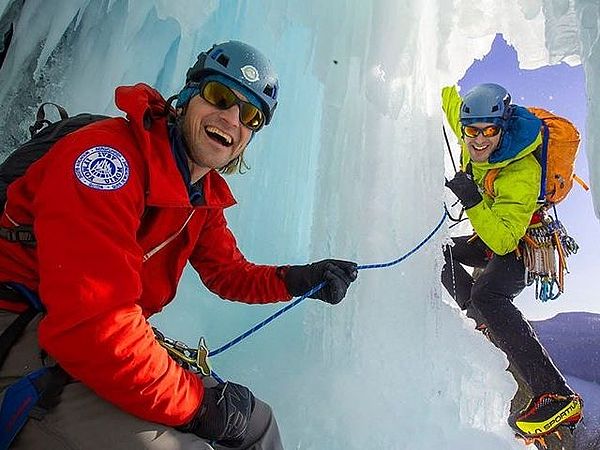There is a world of difference between knowing a route and knowing how to maximize efficiency and safety while climbing a route. Efficient and safe climbing is a lifelong craft. How quickly you develop in your craft will largely be a function of how effectively you are instructed along the way and how reflective you are throughout that learning process. Paul Petzholdt (who climbed the Grand Teton at age 16 in his cowboy boots and later went on to found the National Outdoor Leadership School) once opined in his matter-of-fact style:
There's a lot of fellers out there who say they've got twenty years of climbing experience. That's horseshit! They got two years of climbing experience and eighteen years of repeatin' the same mistakes over and over again.
A skilled guide-instructor can help you to avoid repeating costly, annoying, and dangerous mistakes over and over again. Your climbing will become safer and your climbing will become more efficient.
Most people are aware of the idea that effective guided-instruction will increase their safety on a climb—that's the most oft-cited reason I hear of for hiring a guide. And many people are aware that effective guided-instruction will increase their climbing efficiency, fleshing out their climbing toolkit with techniques to tackle bigger, harder, routes in less time. But the part of the equation that is often overlooked and seems to go oddly unspoken concerns that element which brings us to the sport originally: enjoyment. Whether it is the enjoyment of sharing an expansive view at the top of a cliff with your favorite climbing partner, the enjoyment of utter exhaustion back at camp after a summit, or the enjoyment of pulling the crux sequence on a sport climb that has been heckling you for months, it is enjoyment—in its myriad forms and facets—that draws us to climbing.
You don't need to climb long to discover that people are often definitely and definitively not enjoying their climbing day: Climbing partners screaming at each other because they've set their belays way too far apart, or a belayer hunched awkwardly over the ill-placed anchor by his knees, trying to bring in rope while his partner frantically yells “up rope!”, or a climber soloing up sketchy terrain to free a stuck rappel rope because she doesn't know the first thing about rock rescue. Perhaps worst of all is the couple you encounter in the parking lot, who pack up their things, and drive off in dead silence. These are just a few of the myriad scenarios that can unfold when people's technical skills sets do not progress in unison with their climbing ability. I know you'll see all of these examples and many, many more as you continue climbing. I have seen such things and—sadly—over the course of my climbing career I've lived many of them as well. But over the years I took steps to advance my learning and these moments happen less and less...and I'm enjoying climbing more and more.
So don't just consider hiring a climbing guide so that you can become a safer climber. Don't just consider hiring a climbing guide so that you can learn to climb harder, longer routes more efficiently. Hire a climbing guide so that you will learn techniques that allow you to enjoy your climbing more.
Here are two more articles you might find interesting regarding how and why to go with a climbing guide-instructor:
How to Choose a Climbing Guide. Post in the Global Rescue blog.
5 Reasons to Climb with a Professional Mountain Guide. Post in Kate's Real Food blog.

